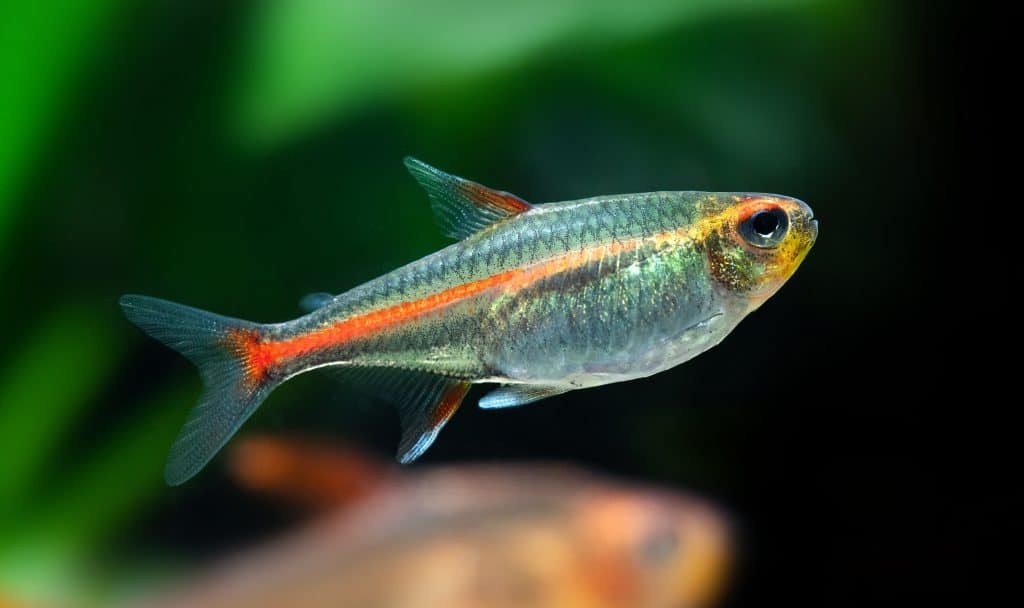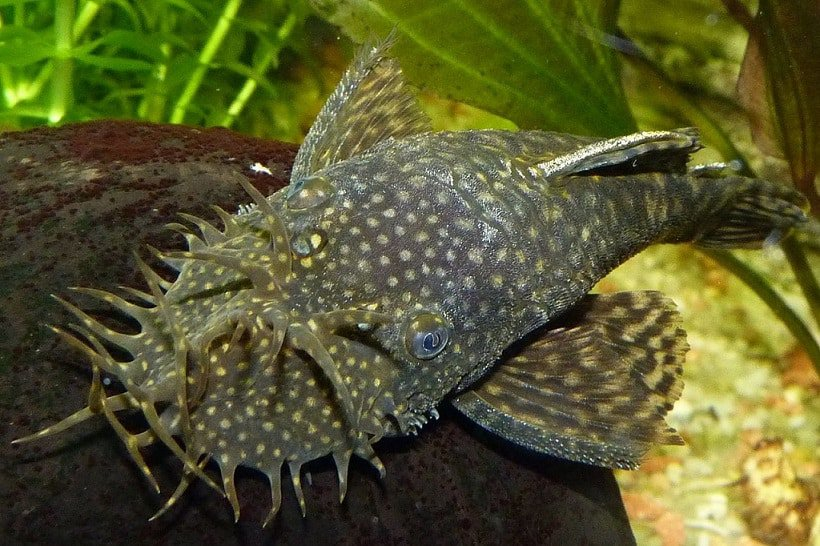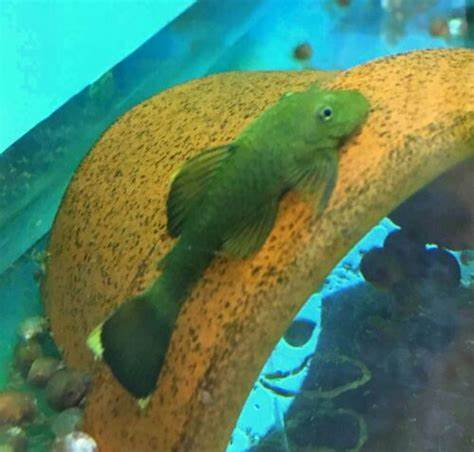Originating from China, Laos, Vietnam, and Thailand, this fish is known worldwide as the Chinese barb, but the species is naturally green in color.
The gold-colored, captive-bred variant is highly popular in the aquarium trade, giving rise to the name gold barb, by which it is commonly sold. It is a flashy, peaceful fish for a community tank, but in the wild, this man-made shiny coloring would make it quick prey for predators.
The gold barb has a steeply-sloped back and short barbels positioned at the corners of the mouth. A number of dark vertical bars or blotches are visible along the flanks of the fish. Well-conditioned specimens may also have red coloration on the fins.
The naturally occurring color of this barb is green, but the green P. semifasciolatus is rarely seen in the aquarium trade due to the overwhelming popularity of the gold form. Virtually all specimens currently sold are captive-bred, and a few other color variations have subsequently arisen, including an albino variant as well as a tricolor variation.
This gold form was selectively bred by Thomas Schubert in the 1960s and was at one time thought to be a distinct species, referred to as Barbus schuberti or P. semifasciolatus var. schuberti. It is now known to be the same species as the wild form.
Tankmates
Gold barbs are schooling fish and should be kept in groups of at least a half-dozen or more. The peaceful nature of this species makes them an excellent choice for community aquariums of other similarly-sized peaceful fish including tetras, danios, and other small barbs.
Gold Barb Habitat and Care
Gold barbs are quite hardy and undemanding of water conditions or habitat essentials. They originate in free-flowing streams and rivers, so use a powerhead to provide a decent current.
They should be provided with a good-sized open space for swimming, along with plants, driftwood, or other decors for use as hiding spots. Use a fine-grade substrate, preferably of a darker color to showcase the colors of the fish.
Gold Barb Diet and Feeding
In their natural habitat, this species lives on a diet of insects and their larva, as well as worms, vegetation, and even detritus. It’s a prime example of an omnivore, eating just about anything available. To maintain optimal health, a varied diet is advisable.
Flake, pellet, freeze-dried and frozen foods will all be readily accepted. When possible, include live foods such as insects, brine shrimp, and worms of all types. Fresh vegetables are an excellent added supplement.




Reviews
There are no reviews yet.